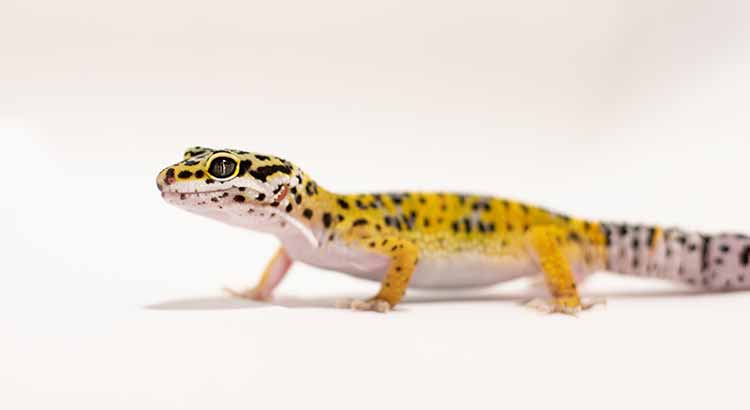Leopard geckos are fascinating companions, but ensuring their dietary needs are met can be a puzzle. Today, we explore the intriguing world of buffalo worms and whether they make a suitable meal for your scale-clad friend.
Buffalo worms, a popular choice in reptile nutrition, can indeed be a part of a leopard gecko’s diet. Understanding the right portion size, nutritional benefits, and potential risks is crucial for providing a well-rounded and balanced meal for your scaly companion.
Join us as we unravel the secrets of buffalo worms as a dietary choice for leopard geckos. From portion control to nutritional advantages and potential risks, this article will guide you through every aspect, ensuring your gecko’s health and happiness.
Nutrition – Is It a Healthy Meal?
Buffalo worms, packed with protein and essential nutrients, can be a nutritious addition to your leopard gecko’s diet. These tiny larvae are a great source of energy, aiding in muscle development and overall well-being. Rich in fat, they provide the necessary fuel for your gecko’s daily activities.
Additionally, buffalo worms offer a good balance of calcium and phosphorus, essential for maintaining strong bones and a healthy skeletal structure. This is crucial for leopard geckos, ensuring they thrive in captivity. The nutritional composition of buffalo worms aligns well with the dietary requirements of these unique reptiles, making them a suitable and wholesome meal option.
While they aren’t the sole answer to your gecko’s dietary needs, incorporating buffalo worms can contribute to a well-rounded and diverse menu. Combine them with other appropriate feeder insects and supplements to provide a varied diet that mimics the nutritional profile of their natural habitat.
Potential Risks
While buffalo worms offer nutritional benefits, it’s essential to be aware of potential risks associated with their consumption by leopard geckos. One concern is the high-fat content, which can lead to obesity if not monitored. To mitigate this, balance their intake with lower-fat feeder insects and ensure a diverse diet.
Another consideration is the chitin content in buffalo worms’ exoskeletons, which could pose challenges for digestion. To address this, make sure to provide a proper substrate in your gecko’s enclosure, aiding in the breakdown of chitin. Additionally, observe your gecko for any signs of digestive issues and adjust their diet accordingly.
Alternatives
Variety is key to a leopard gecko’s well-being, and offering alternative feeder insects is a great way to ensure a balanced diet. Crickets, mealworms, and waxworms are popular choices that can complement buffalo worms. Each insect brings a unique nutritional profile, helping to cover a broader range of essential nutrients.
Consider rotating these alternatives to prevent dietary monotony and encourage a diverse nutritional intake. Additionally, introducing occasional treats like small pieces of fruit or vegetables can provide additional enrichment. However, moderation is crucial, as treats should not compromise the overall nutritional balance of your gecko’s diet.
Maintaining a Balanced Diet
Achieving a balanced diet for your leopard gecko involves a combination of feeder insects, supplements, and occasional treats. Ensure that the primary focus remains on appropriately sized and nutritious insects like buffalo worms. Integrate a calcium supplement to support bone health, and vitamin supplements as needed to address any potential deficiencies.
Observe your gecko’s behavior and body condition regularly. Adjust the diet based on their age, size, and overall health. Monitoring their weight and ensuring they are neither underweight nor overweight is crucial. Remember, the goal is not just to feed your gecko but to provide a diet that promotes their overall well-being and vitality. A balanced and varied menu is the key to a healthy and happy leopard gecko.
FAQ
Can leopard geckos eat buffalo worms exclusively?
While buffalo worms offer nutritional benefits, it’s not advisable to rely solely on them for a leopard gecko’s diet. These creatures thrive on variety, and an exclusive diet of buffalo worms may result in nutritional imbalances. Integrate a mix of feeder insects, such as crickets, mealworms, and waxworms, to ensure a well-rounded and diverse nutritional intake.
How often should buffalo worms be fed to leopard geckos?
The frequency of feeding depends on your gecko’s age. Younger geckos may require daily feedings, while adults can be fed every other day or three times a week. Pay attention to their behavior and adjust the feeding schedule accordingly. Regularly monitoring their weight and body condition will guide you in finding the right balance.
Are there any specific signs of overfeeding buffalo worms?
Yes, there are signs to watch out for. Obesity can be a concern, so monitor your gecko for any significant weight gain. If you notice lethargy, difficulty moving, or a decrease in activity levels, it might be an indication of overfeeding. Adjust the portion size and consider incorporating lower-fat feeder insects to maintain a healthy weight.
Final Thoughts
In conclusion, feeding buffalo worms to your leopard gecko can be a nutritious and beneficial part of its diet when done in moderation and alongside a diverse range of feeder insects. Understanding the potential risks, exploring alternatives, and maintaining a balanced diet are key components of responsible gecko care. By staying vigilant, observing your pet’s behavior, and making informed choices, you can contribute to the health and well-being of your leopard gecko.

